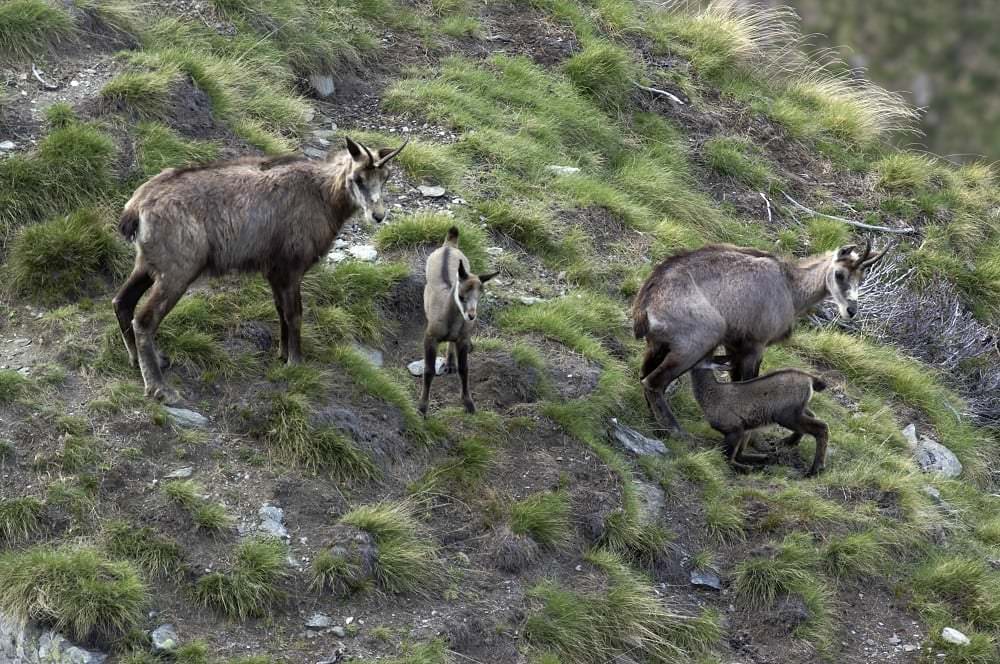Where wildlife roams in Switzerland
Switzerland may have some wild landscapes with soaring mountains and deep verdant valleys peppered with glistening lakes, but their wildlife offering is just as spectacular.
Travellers who keep their eyes peeled for is the wildlife that is ever so present in this Alpine country will be pleasantly surprised with what they will find.
While some animals can be seen all year round, others are only out and about during the warmer months. Here are six spectacular Swiss wildlife to look out for, especially while hiking through the alps in the summertime.
Alpine Ibex

Switzerland is home to around 17,000 ibex. With their horns the most striking feature, the best way to see them in summer is to go high up the mountains. These mountain goats’ love the rocky terrain far above the tree line. However, they also often gather in the vicinity of some cableway terminals and villages. As soon as the grass starts to sprout in the valley, these majestic animals will venture towards the upper edge of villages where they will be grazing, basking in the sunshine and tussling amongst themselves. A great way to see the ibex is via an ibex safari up on Mt Pilatus in Lucerne.
Chamois

The Chamois is a species of goat-antelope that can be found darting across snowfields and up near-vertical cliffs. They are perfectly adapted for rock climbing with sharp hooves providing them with grip required for wet and icy surfaces. When looking out for them, say in Zermatt, know that they enjoy resting in mountain crevices, where they are protected from predators such as lynxes and wolves.
The Bearded Vulture

This bone swallowing bird may look and sound scary with its large wingspan, silent gliding flight and pointed tail, but the bearded vultures are completely harmless. With their diet consisting almost entirely of bone marrow, they can swallow large bones whole and digest them with their special gastric juices. There are plenty of places to spot them especially in national parks.
Marmots

The chorus of marmots’ whistles can be heard on almost every mountain hike. To spot, especially around the Grindelwald, is easy. Small mounds in the Alpine pasture reveal where they have dug their burrow system. When threatened, these rodents dive into their tunnels, but will very shortly afterwards poke their noses back out to continue feeding on their herbs. Greetings amongst two marmots involve sniffing each other or cheek rubbing, which in marmot language, translates to “you belong to us”. Summertime is when the marmots fatten up before hibernating in their burrowed cave during the winter months.
Red Kite

The third largest native bird of prey in Switzerland, the Red Kite is easily identifiable by its deeply forked tail. On warm days, they can be observed circling in the sky above meadows, fields and orchards in search of prey, including field mice, moles, frogs or even a careless crow. They can even sometimes be found walking across a freshly mowed lawn while snacking on earthworms. One place to spot them is at the Naturepark Diemtigtal.
Red Deer

Mostly found in the woodlands in the Alps and Jura, these red deer may appear to the naked eye as small dots on the landscape. However, their reddish-brown summer coats make them instantly recognisable as deer; and a herd of stags can be identified by their velvet-covered antlers in summer. The velvet layer sheds in autumn, signifying the stags are ready for fights during the rutting season. The antlers then shed in late winter for regrowth again in spring. They are also easily spotted in the Swiss National Park.






